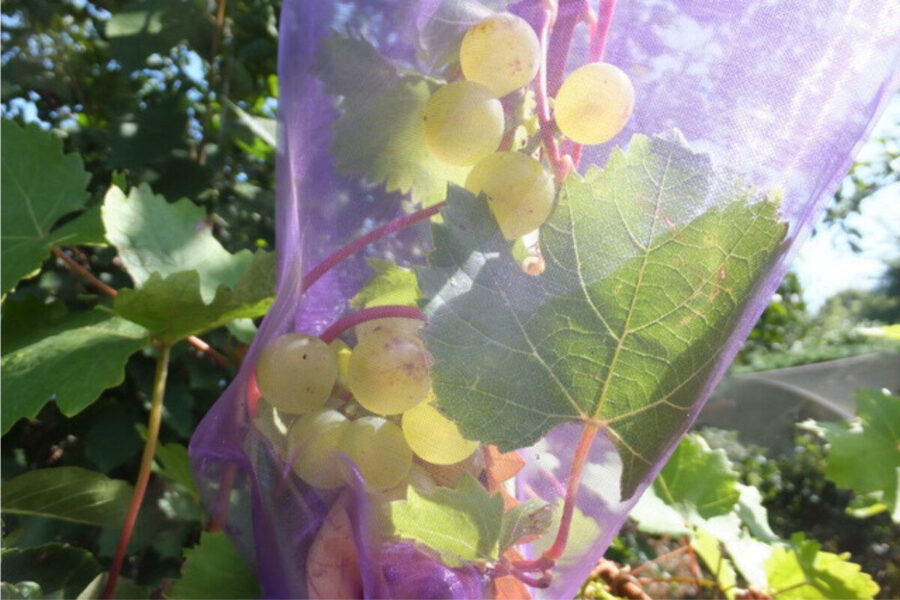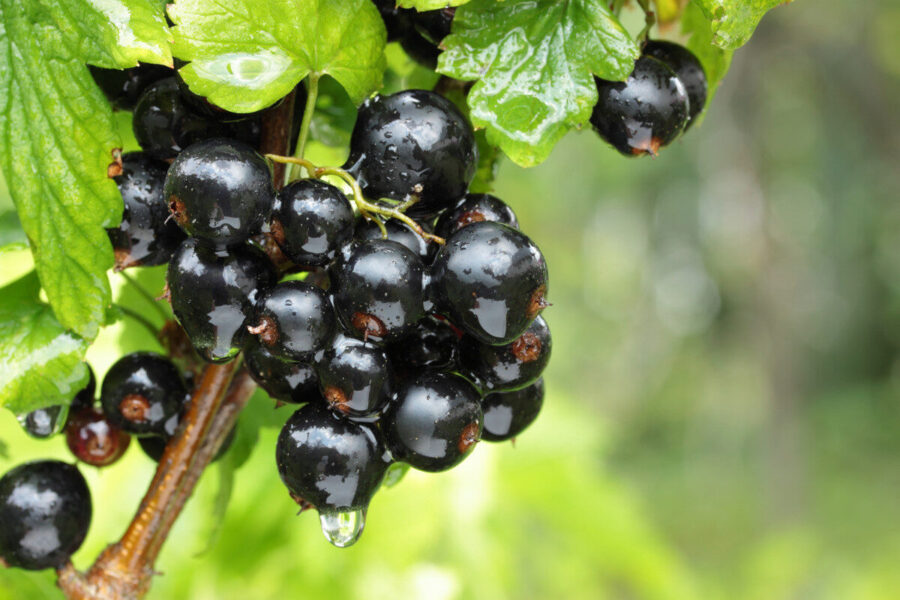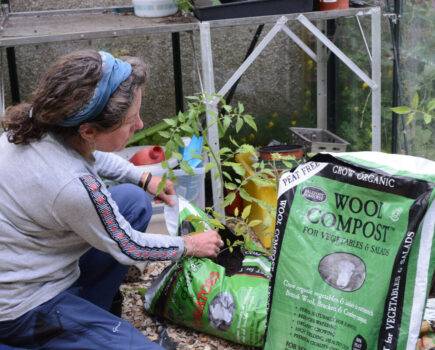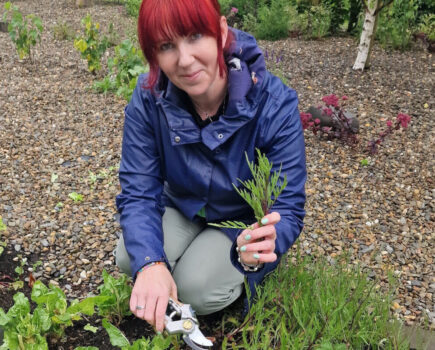Bob reveals some ingenious natural methods to keep fruit safe from feathered foragers
I love garden birds – who doesn’t? – but when I ‘share’ my cherries with them they take the blooming lot. And that’s a problem, as just a few birds left unchecked will quickly decimate our ripening crops, particularly soft fruits. They just can’t resist those sweet moist morsels robbing our currants and berries remorselessly.
Birds have preferences and can be fooled, so yellow raspberries remain untouched when next to apparently ‘riper’ red versions. Likewise, red currants disappear in a flash while white currants hang on, and yellow Pyracantha berries long outlast the orange. Green gooseberries may escape for a while too, whereas dark red fruits are soon gone.
The delicious Japanese Wineberry has small orangey red ‘black berries’ which birds ignore as not ‘ripe’.
(The cunning wasps are not so easily fooled by colour as they can ‘test’ fruits to know when they are at their sweetest – often a good indicator for us of which to pick.)
Birds use berries for moisture so give them water

Now rather surprisingly we can reduce losses to birds by providing them with many sources of water. You see, birds have very fast metabolisms, they can run on sugar but mostly live on insects, or on seeds which although small are packed full of goodies.
Pulpy soft fruit seeds are of little value to them as most pass through their little systems too speedily. The sugar is of course as addictive to birds as it is to us but it’s the moisture they’re really after. Birds need a lot of water, because they’re running hot inside their insulation suits of plumage and flying is let’s face it, hard work. Thus much of the damage they do is for the water content of our pulpy fruits, and succulent young seedlings particularly beetroot and salad leaves.
Therefore the more bird baths we provide the better, and you should provide some water on the ground in old breakfast bowls or similar, as these are also handy for hedgehogs. For birds’ comfort ideally put them in the open in the middle of a patio or lawn, or up on top of something such as a flat roof where they are safer from cats.
Other ways to protect precious fruits

And that’s the cue for the next measure, for what crazy bird would eat within pouncing distance of a snoozing moggie? A fake fur moggie can work as a deterrent just as well, initially, but birds are clever and soon realise a non-moving cat is no deterrent so we need to move it about during the day.
Fortunately birds are also really scared of snakes and giant spiders and their webs, so we can alternate fake cats with giant fake spiders, and a painted hosepipe snake or three. I found old wigs are given a wide berth if hung up to look like some ghastly spiderish threat.
This can all end up looking a bit Halloweenish, so if you are concerned about the neighbours’ approval, you may be better off sticking to the alternative of netting. A walk-in fruit cage is the most effective and least effort once erected, but individual pieces of fine net fitted over a frame and held in place with clothes pegs also work well.
Always make sure they are pulled taut and any loose ends are tucked neatly away, so you don’t snare birds and hedgehogs.
Organza drawstring ‘gift’ bags are another idea as they neatly enclose choice fruits, defeating birds and also excluding wasps and flies.
Whichever you choose to use, do it now as otherwise tomorrow our feathered friends will have scoffed the lot!
Find more tips, advice and articles like this at the Amateur Gardening website. Subscribe to Amateur Gardening magazine now





